Содержание
- 2. Course Agenda Session 1. International Marketing Concept Session 2. International Marketing Environment Session 3. Foreign Market
- 3. Session 1. International Marketing Concept Marketing - the process of creating, distributing, promoting, and pricing goods,
- 4. Marketing Concept A managerial philosophy that an organization exercise so as to satisfy customer needs through
- 5. International Marketing Definitions Marketing «over political borders» Marketing targeted at foreign consumer demands Key decisions: foreign
- 6. Famous Marketing Blunders Otis elevator in USSR- sign said good for sex Parker Pen (ink) in
- 7. Famous Marketing Blunders Exxon (gas) in Thailand - used meaningless tiger symbol Warner-Lampert (mouthwash) in Thailand
- 8. Export Motives Internal proactive: managerial urge, growth / profit goals, marketing skills, economies of scale, unique
- 9. Possible Risks Misunderstanding foreign consumer Low product competitiveness Different business culture Lack of communication skills Unfamiliar
- 10. Marketing Strategy Target market - a specific group of buyers whose needs and wants a company
- 11. Global Economy Internationalization (aspects - world trade, direct investments; drivers - market opportunities, excessive capacity) Global
- 12. Strategic Choice Global marketing (Coca-Cola, McDonalds, Levi Straus, Marlboro) / Multinational marketing (Unilever 1000 brandnames, P&G)
- 13. Case 1. Standardization or Adaptation?
- 14. Session 2. International Environment Economic forces Culture Socio-demography Political/legal forces Technology Competition
- 15. Economic Environment Economy structure – “natural economy” countries (self-consumption+exchange), raw components exporters, industry-developing countries (20% processing
- 16. Business System Concept
- 17. Cultural Environment Interpersonal relations: high context - Asia, Arab countries (intuition, power of word, tradition, informal,
- 18. Socio-Demographic Environment Population growth - 6,5 bln, consumption growth (=consumer markets?) Age structure - Mexico/Japan Ethnic
- 19. Political / Legal Environment Political stability Role of government (income centralization, state trading volumes, investment policy)
- 20. Technological Environment Different standards Informational systems (internet, intranet, extranet) Trends: infinitive reach, short life cycle, “small-mini-micro”,
- 21. Competitive Environment (Michael Porter’s Model)
- 22. Competitive Environment Competitors - «us or them» / alliances Potential entrants - «study your industry» /
- 23. Competitive Environment Trends Soft competition Small niches Goods / services / impressions (emotions) Brand races False
- 24. Brand Values in 2013 Apple — $ 185,071 bln. Google — $ 113,669 bln. IBM —
- 25. Russian Brands «Сбербанк» (70th place; $ 12,655 млрд.) МТС (82d place; $ 10,633 млрд.)
- 26. Case 2. IKEA’s Expantion in the U.S. Market What are the reasons behind IKEA'S success in
- 27. Session 3. Foreign Market Entry Strategies Market Selection Methods PEST-analysis SWOT-analysis Market Penetration Strategies Target Market
- 28. Foreign Market Entry Goals Profit Market share Market test Risk diversification Setting barriers to competitors
- 29. Market Selection Methods Waterfall (the “nearest neighbor” method) Sprinkler (the most promising countries selection)
- 30. First-Rank Criteria Measurability of segments (size, purchasing power) Consumer accessibility (language, skills, understanding foreign culture) Profitability
- 31. “Sprinkler” Steps Geographic segmentation - market indicators (barriers), product indicators (barriers), market potential evaluation Socio-economic segmentation
- 32. Indicators of Segmentation Market indicators (not depend on a specific situation): country (economy, politics, culture, demography,
- 33. Market Selection Simple Model
- 34. Market Selection Standard Model
- 35. PEST-Analysis
- 36. SWOT-Analysis
- 37. Penetration Strategy: Concentration vs Diversificaton t «Optimal market» Number of markets Concentration (“ant”) strategy Diversification (“bee”)
- 38. Concentration vs Diversificaton (Key Decision) 1) Competitive goal (diversificaton – setting barriers for entrants, concentration -
- 39. Concentration vs. Diversification (Strengths) Specialization Market penetration Market knowledge Staff experience Networking Greater flexibility Less dependence
- 40. Target Market Segmentation Breaking down the market for a particular product or service into segments of
- 41. Positioning Positioning – creating and retaining a clear product image (perception) in customers’ mind Which differences
- 42. Positioning modes Product functions Advantages, problem solving Usage method User category Relation (comparison) to (with) another
- 43. Competitive profile Image Quality
- 44. Competitive differentiation Competitive differentiation – designing differentiating characteristics of a product comparatively to competitors
- 45. Competitive differentiation strategies Product (extra opportunities in usage, effectiveness of usage, design, reliability) Service (office, transportation,
- 46. Segmentation and positioning steps Segment the market Define target segments Define target customers demands for the
- 47. Case 3a. NovoNordisk Segmentation What is the target market for a pharmaceutical company?
- 48. SEGMENTATION of the doctors approach each doctor separately justify price, approach MOH, then opinion leaders SECTORS
- 49. SEGMENTATION of the doctors (cont’d) less frequent visits # of PATIENTS ATTITUDES highlight the long term
- 50. TARGET GROUPS
- 51. Case 3b. BENIHANA of TOKYO Rocky Aoki Story – the first restaurant in New York Characteristics
- 52. BENIHANA success factors Low cost of employees Low cost of food Low cost of beverages Good
- 53. Cost Structure at BENIHANA
- 54. Differentiation at BENIHANA Lounge (bar) Large eating space «Hibachi» table in ancient Japanese village Small kitchen
- 55. BENIHANA in Moscow
- 56. BENIHANA in Moscow
- 57. BENIHANA in Moscow
- 58. BENIHANA in Moscow
- 59. Session 4. Portfolio Strategies Boston Consulting Group Matrix General Electric Matrix
- 60. Portfolio Analysis (BCG Matrix) Relative Market Share Sales growth rate 10% 20% 10x 5x 1x 0,5x
- 61. Portfolio Analysis (formulas) SGR = (S1 - S₀) / S₀ RMSc = MSc / MSl RMSl
- 62. Portfolio Analysis (BCG Matrix) Relative Market Share Sales growth rate 10% 20% 10x 5x 1,5х 1x
- 63. Portfolio Analysis (BCG Matrix) Relative Market Share Sales growth rate 10% 20% 10x 5x 1,5х 1x
- 64. Portfolio Analysis (BCG Matrix) Relative Market Share Sales growth rate 10% 20% 10x 5x 1,5х 1x
- 65. Portfolio Analysis (Matrix GE) Firm competitiveness Market (country) attractiveness 3 3 6 9 6 9
- 66. GE Matrix Composite Dimensions Attractiveness Market growth Market capacity Economic and political stability Competitiveness Marketing skills
- 67. Portfolio Analysis (Matrix GE) 3 3 6 9 6 9 USA China France Russia
- 68. GE Matrix Advantages Combines firm’s SW and market OT Defines primary role of each specific market
- 69. Case 4a. BCG Matrix Define the position of all the products in BCG matrix
- 70. Case 4b. GE Matrix Factor Evaluation Population incomes - 5 Company market share - 7 Market
- 71. Session 5. Product Decisions International Competitiveness International Product Life Cycle New Product Introduction International Product Mix
- 72. Marketing Mix (4 “p”) Product Price Promotion Place People Physical intangibility (нематериальность) Process indefeasibility (неотделимость от
- 73. Famous blunders and decisions Apple vs IBM in Japan P&G in Japan General Motors of Canada
- 74. International Competitiveness Product features (core and complementary) Productivity, cost and price Transfer of R&D to foreign
- 75. Inventory Threats
- 76. Traditional Product Life Cycle Sales / profit Time
- 77. International Product Life Cycle 6 – imports in country A Product export Capital export
- 78. PLC Models Successive mode (market milking, limited resources, no-fashion goods) Parallel mode (aggressive innovation, global marketing)
- 79. Successive Mode
- 80. Parallel (Synchronized) Mode
- 81. Factors of PLC Reduction Trend Foreign markets specific environment: no competitors foreign partner opportunity policy change
- 82. New Product Introduction Export domestic products Piggyback marketing Benchmarking Changing existing products Internal product development
- 83. Changing Existing Products Product modification New uses for existing products industrial use of home-use product male/female
- 84. Product Development R&D location: centralization /decentralization Breakthroughs / improvements (“kaizen tean”) Trends: R&D transfer abroad; R&D
- 85. Breakthroughs / improvements
- 86. Marketing goals priorities
- 87. Product Mix Strategies Product Mix – a set of product lines Short / long product line
- 88. Product Mix: Internal Determinants Goals - profit, market share, risk spreading Resources - surplus production capacity,
- 89. Product Mix: External Determinants Customer - values, product use, “built-in” images (“made in”) Competition (penetration cost)
- 90. Market / product development strategies
- 91. Case 5. BARBIE product policy What is the key to success?
- 92. Session 6. Pricing Decisions Export Price Determinants Price Lines and the “Cannibalism Effect” Export Price Escalation
- 93. Export Price Determinants Costs Competition Customers Product features Legal and political factors Economic situation Company strategy
- 94. 2120 1312 98 Price Sales volume Price Lines and the “Cannibalism Effect”
- 95. Export Price Escalation Product cost in exporter country Export cost prior to entering an importer country
- 96. Foreign and Domestic Prices Export prices are lower - less known, “plus” business, competitors produce cheaply,
- 97. Cost Pricing Marginal price “Technical price” (break-even point) “Cost plus”
- 98. Competition-Based Pricing Prices based on current international price levels Prices based on international practices of pricing
- 99. Pricing Strategies for New Products Skimming the market Penetration pricing
- 100. Skimming the Market Time (PLC stage) Price
- 101. Skimming the Market
- 102. Penetration Time (PLC stage) Price
- 103. Product Type Based Pricing Strategy
- 104. Differentiated Pricing Towards Different Countries Discriminative pricing Preferential pricing Integration of price and product mix /
- 105. Psychological Pricing Prestige (premium) pricing Agiotage pricing “Price to quality” pricing Habitual pricing Unrounded prices
- 106. “Price to quality” pricing H H M M L L
- 107. PLC-Based Pricing Strategy
- 108. Case 6. BIC vs GILLETTE 50s – ball pens 70s – lighters 80s – razors
- 109. Session 7. Promotional Decisions Techniques of Promotion International Promotional Strategy Promotional Barriers International Promotion Trends
- 110. Techniques of Promotion Advertising Public relations Personal selling Sales promotion Direct marketing Package AdTraction
- 111. Advertising Advertising – non-personal paid communication (TV, radio, street, internet, product placement….)
- 112. Public relations Publications Public “out-door” activities (exhibitions, holiday sales, celebrations, events) Company / product news Press-conferences,
- 113. Sales Promotion Samples Bonuses, gifts, “sales” “In-door” activities (product presentations, competitions) Handouts (brochures, posters, magazines, souvenirs)
- 114. Merchandizing Product allocation Purchase facilitation “Space management” Easy access to information
- 115. Personal Sales Company representatives Experts Public channels (network marketing)
- 116. Direct Marketing Direct mail Telemarketing (phone, fax, call-service) TV-shops Electronic commerce SPAMs SMS-offers
- 117. Packaging Roles Dual role - protection, promotion VIEW test: visibility (be distinguished among competitors) informative (quickly
- 118. Packaging Components Language Size Color Cost Picture
- 119. Promotion-Mix Composition Market type factor: consumer / business Product type factor: individualized/standardized, differentiated/regular etc. “Push” strategy:
- 120. Promotional Barriers Language (KFC in China; “touch-toe”; Ford Caliente in Mexico; Chevrolet Nova in Spain) Cultural
- 121. Factors Affecting International Promotion Globalization of Business Growing competition pressures Technological breakthrough
- 122. International Promotion Trends Growth of promotional expenses High profitability of advertising business Emerge of advertising agencies
- 123. Advertising Spending (% of GNP)
- 124. Standardization/Adaptation Strategies
- 125. Preferred International Promotional Strategy Global concept plus partially adapted promotional message (“Think globally, act locally”) Movie
- 126. International Media Global media (Time, Wall Street Journal, Financial Times, CNN, MTV, Euronews, Internet) Local national
- 127. The Biggest Advertising Agencies WPP Group, London Interpublic Group of Companies, NY Omnicom Group, NY Dentsu,
- 128. Case 7a. Repositioning in Kentucky Fried Chicken Why did “Kentucky Fried Chicken” change its name and
- 129. Case 7b. Goodyear Tire and Rubber Goodyear Tire and Rubber advertized products in 39 countries with
- 130. Адаптация рекламы Coca-Cola Coca-Cola Light Plus впервые появилась в Бразилии в 2010 году на "Неделе моды"
- 131. Адаптация рекламы Пообещав бороться с ожирением на глобальном уровне, Coca-Cola решила начать с Аргентины, учитывая уровень
- 132. Адаптация рекламы В Канаде креативное агентство MacLaren разработало наружную кампанию под названием "Straw" ("Соломинка") для Coca-Cola,
- 133. Session 8. Entry Modes Indirect export Direct export Grey export (parallel trading) Overseas production (manufacturing, assembly)
- 134. Indirect Export Home country based merchants (export merchant, trading company, “cable” merchant) Home country based agents
- 135. Evaluation of Independent Marketing Organizations Difficult to categorize Short time Minimum financial outlay Promote only the
- 136. Direct Export Home country based department (export manager, built-in or separate export department, export sales subsidiary)
- 137. Evaluation of Dependent Organizations Full return from sales (no sharing profits) Complete control over marketing Thorough
- 138. Grey Export (Parallel Trading) Deteriorate pricing Change cash flows Accelerate market penetration Market demand test Access
- 139. Manufacturing / Assembly Location – “climate” for foreign capital, production considerations, competition, political risk (transfer, operational,
- 140. Strategic Alliances Goal - enhance long-run competitiveness of partners Advantages - sharing large investments (R&D), access
- 141. Licensing Licensing - the right to use: 1) technology, know-how, manufacturing processes 2) trademark, brand name,
- 142. Licensing Pros and Cons Advantages - use licensee’s resources, royalties, market test Drawbacks - lack of
- 143. Franchising Incomplete licensing - supplement of important ingredient of the finished product (Coca-Cola: syrup; McDonalds: raw
- 144. Contract Manufacturing Products manufactured by foreign partner are targeted for sales in this country or elsewhere
- 145. Contract Manufacturing Pros and Cons Advantages - minimum investment/rapid entry, control over marketing and service (=trademark
- 146. Management Contracting Local investor provides capital, international marketer provides management know-how One of the forms –
- 147. Management Contracting Pros and Cons Advantages - low risk, guaranteed income and quick return, functional control
- 148. Joint Venture Shared ownership and control Technical and emotional effect Advantages - good for limited capital
- 149. Disagreements in Joint Venture Profit reinvestment / dividend maximization Partner share evaluation Foreign market penetration levels
- 150. Strategic Alliances Goal – enhancement of partners’ competitiveness Advantages – access to extra resources (technologies), risk
- 151. Strategic Alliance Forms R&D-consortia (sharing engineers) Cross-distribution agreements Marketing agreements Investment agreements Manufacturing agreements
- 152. Distribution Mode Selecting Criteria
- 153. Case 8. KFC in Mexico Should KFC leave the Mexico market???
- 154. Session 9. Marketing-Mix: International Practice McDonalds Product Decisions
- 155. Case 9a. McDonalds Product Decisions Fast-food Fast-marketing
- 156. McDonalds Marketing Space design (furniture) Loud noisy music Time limit per customer Standardized positive phrases Beverages
- 157. Session 10. Marketing Research and International Marketing Plan
- 158. International Marketing Plan Foreign market selection Situational analysis (PEST/ STEP/ STEEP, SWOT) Target market definition and
- 159. Маркетинговая информация позволяет предприятию: Снизить финансовый и имиджевый риск Получить конкурентные преимущества Следить за маркетинговой средой
- 160. Виды маркетинговой информации Первичная информация - данные, получаемые в результате специально проведенных для решения конкретной маркетинговой
- 161. Достоинства и недостатки первичной информации: Достоинства первичной информации: - сбор в соответствии с поставленной целью; -
- 162. Внутренние источники вторичной информации (документация фирмы) Бюджеты Отчеты Счета Архивы Предыдущие исследования и др.
- 163. Внешние источники вторичной информации Публикации национальных и международных официальных организаций Публикации государственных органов, министерств, муниципальных комитетов
- 164. Достоинства и недостатки вторичной информации Достоинства: - дешевизна по сравнению с первичной информацией; - возможность сопоставления
- 165. Основные секторы рынка маркетинговой информации Экономическая информация Биржевая и финансовая информация Профессиональная и научно-техническая информация Коммерческая
- 166. Маркетинговая информационная система
- 167. Основные преимущества использования МИС Организованный сбор информации Широкий охват информации Предупреждение кризисов в деятельности фирмы Координация
- 168. Использование МИС для принятия маркетинговых решений
- 169. Стадии маркетингового исследования
- 170. Основные методы исследования Наблюдение Эксперимент Групповые исследования Качественные исследования Обзорные исследования
- 171. Преимущества и недостатки четырех контактных методов
- 172. Примеры открытых вопросов
- 173. Примеры закрытых вопросов
- 174. Последовательность критериев при работе с отчетом
- 175. Международный план маркетинга Выбор зарубежного рынка Ситуационный анализ (PEST, SWOT) Определение и сегментация целевой аудитории Конкурентное
- 177. Скачать презентацию













































































































































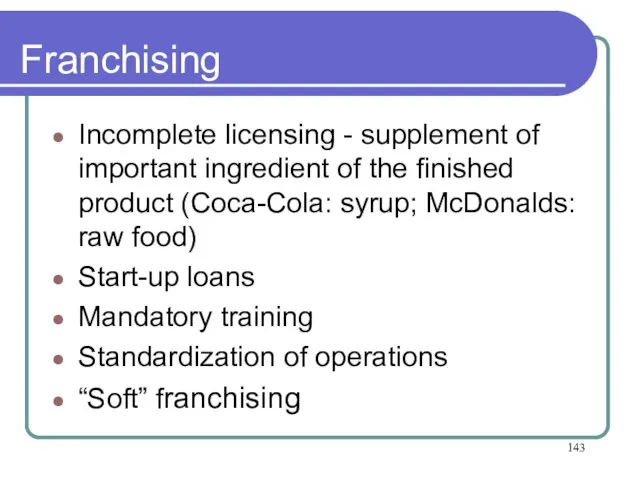
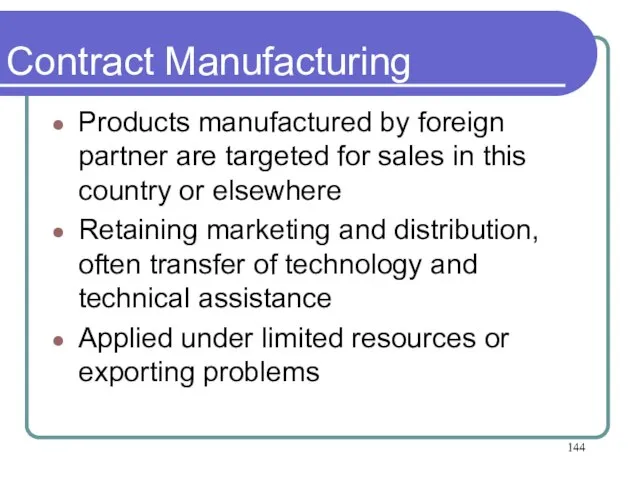

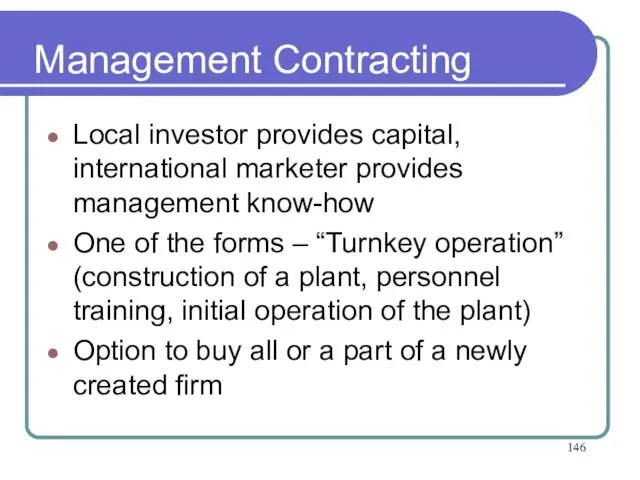
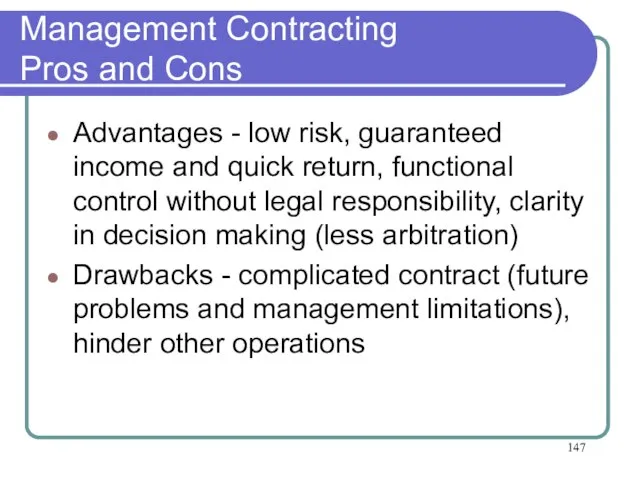
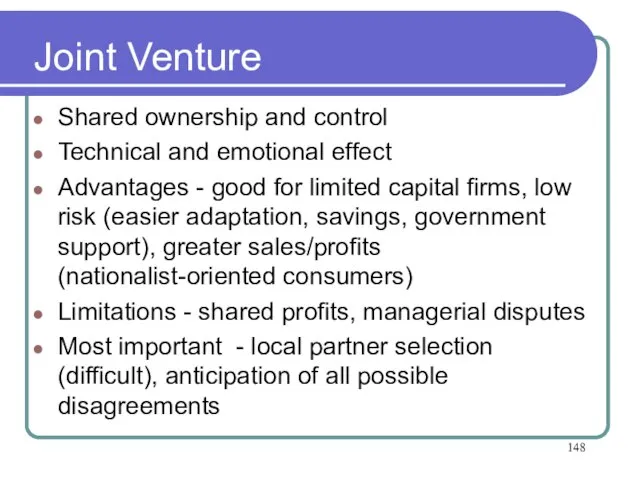
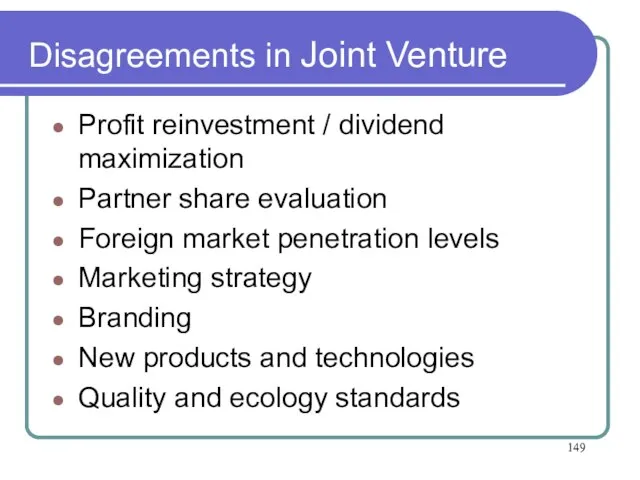
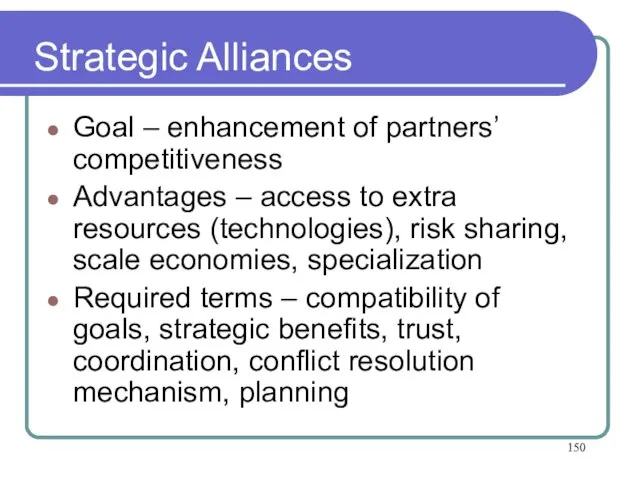
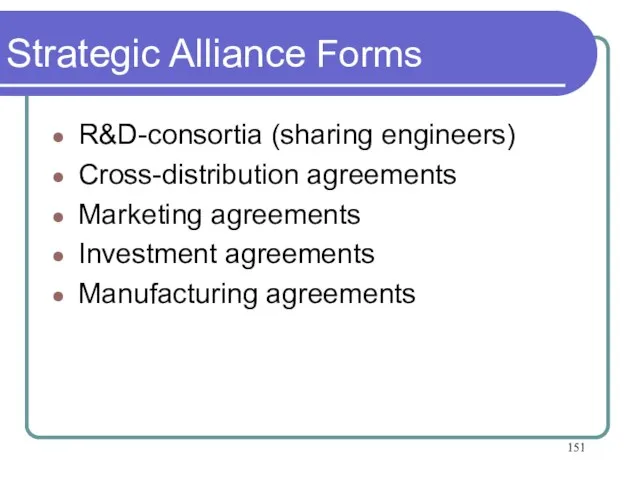
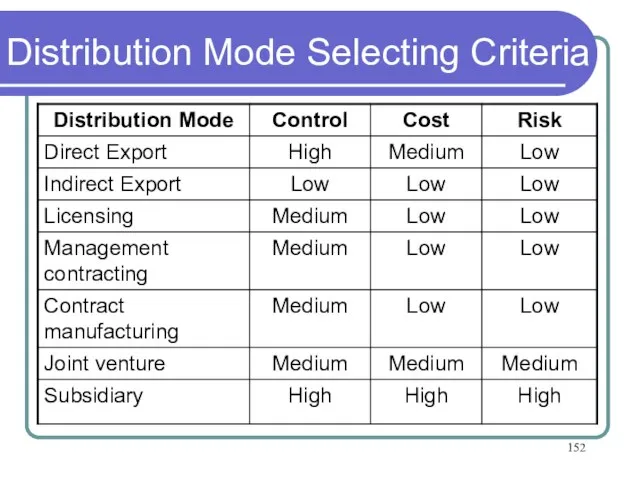
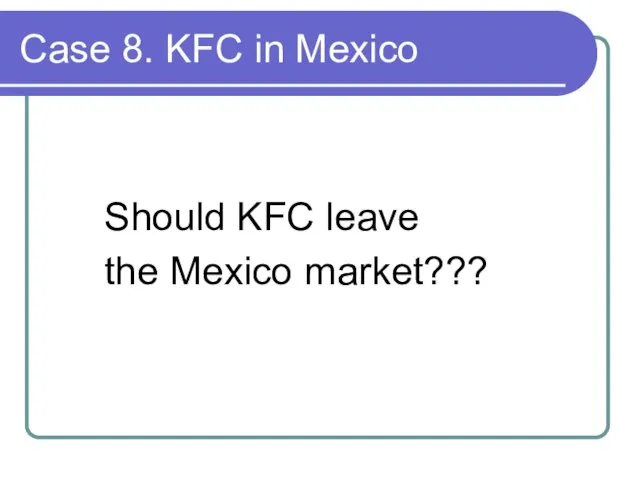
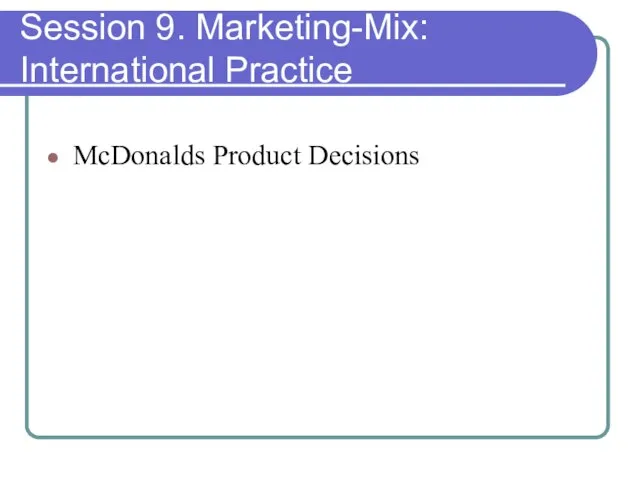
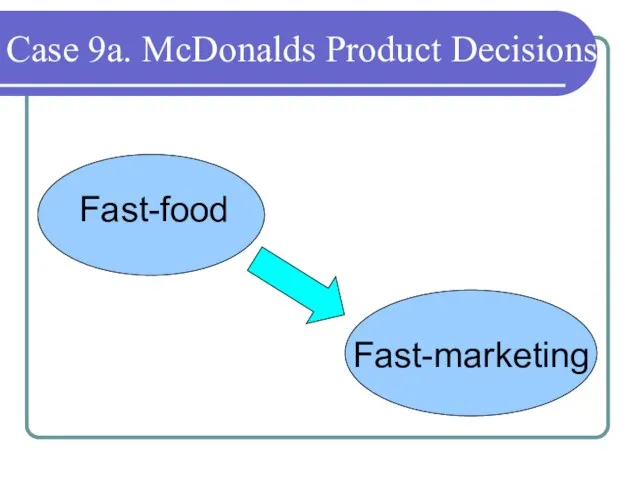
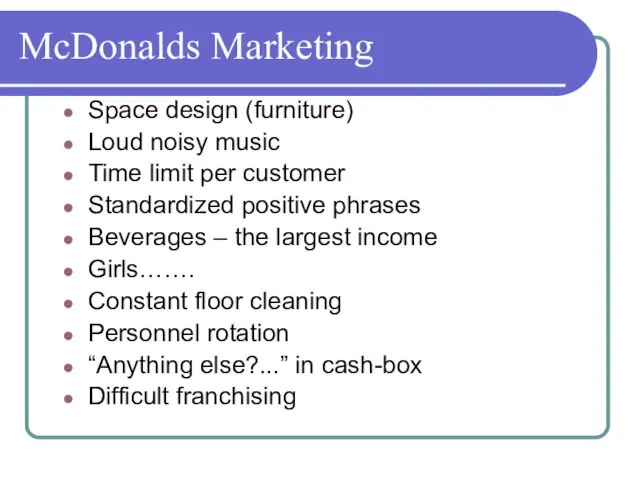
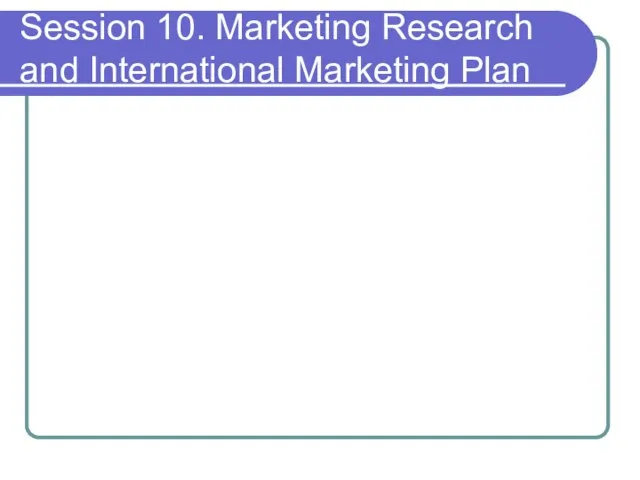
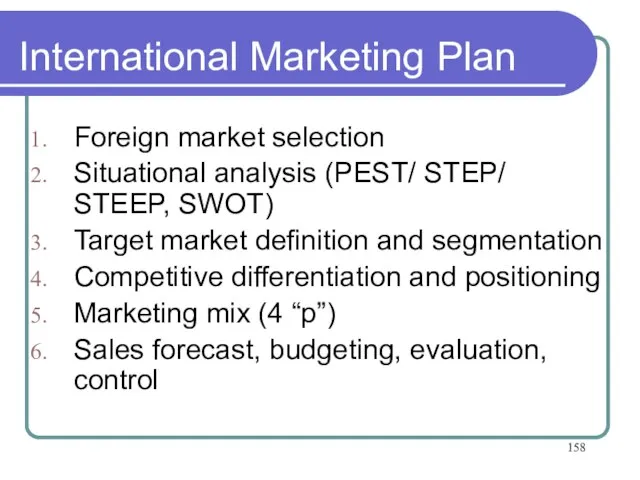
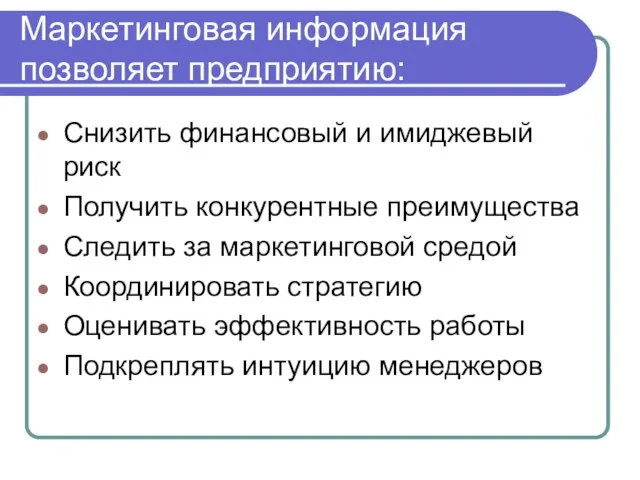
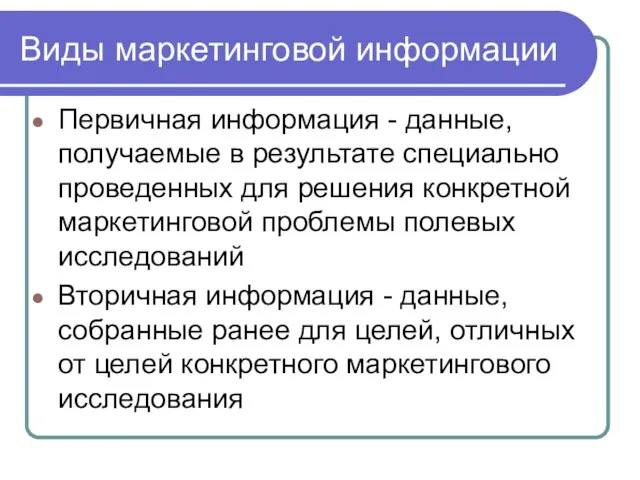
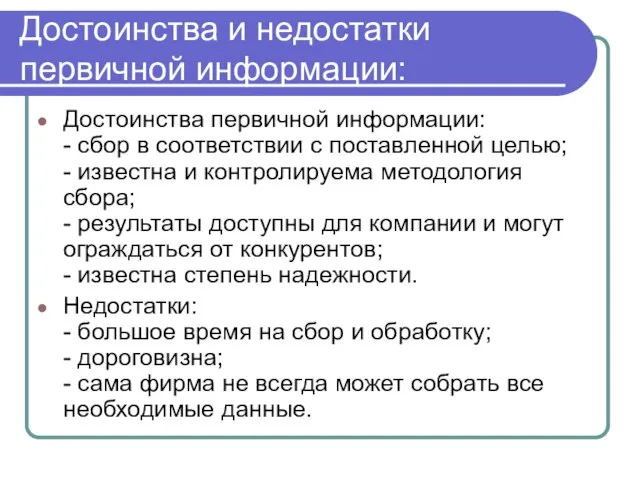
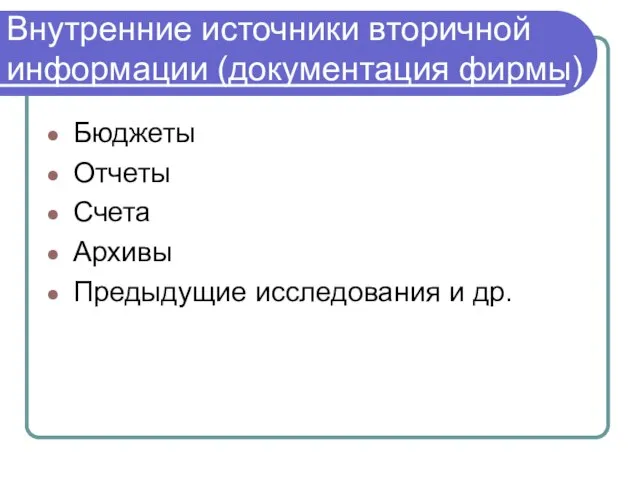
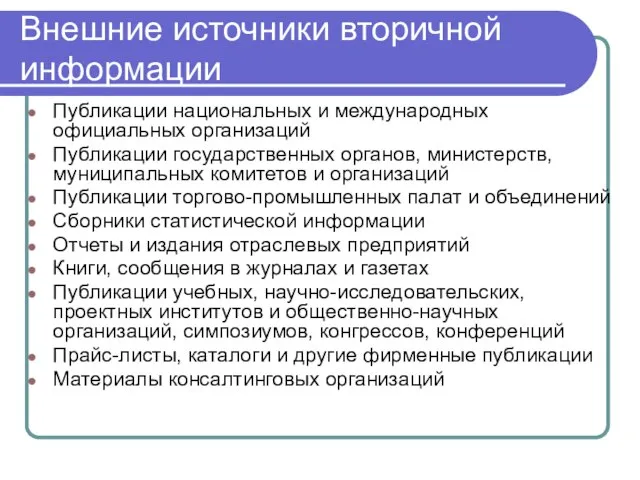
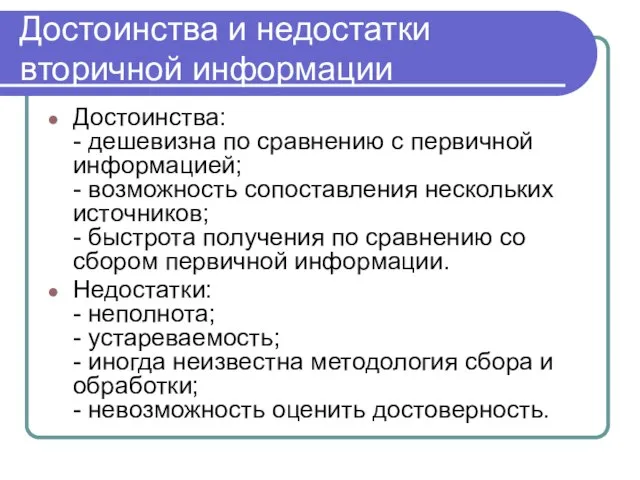
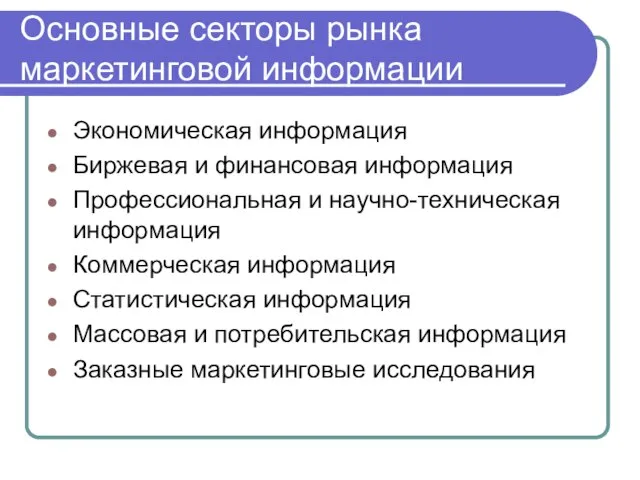
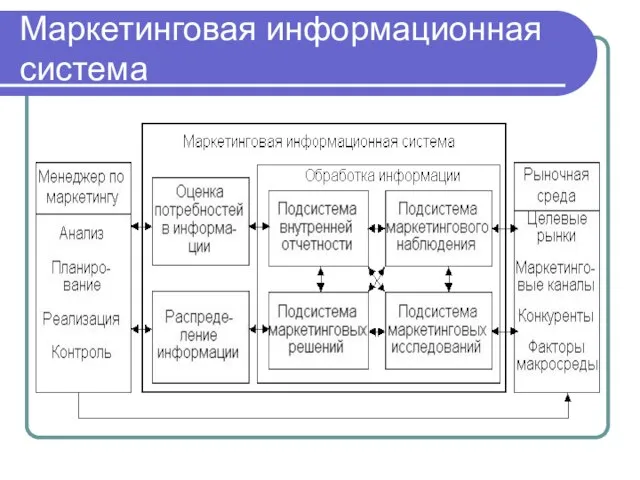
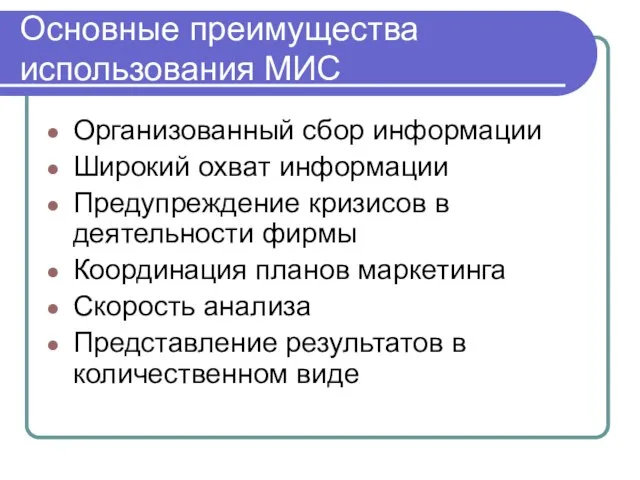
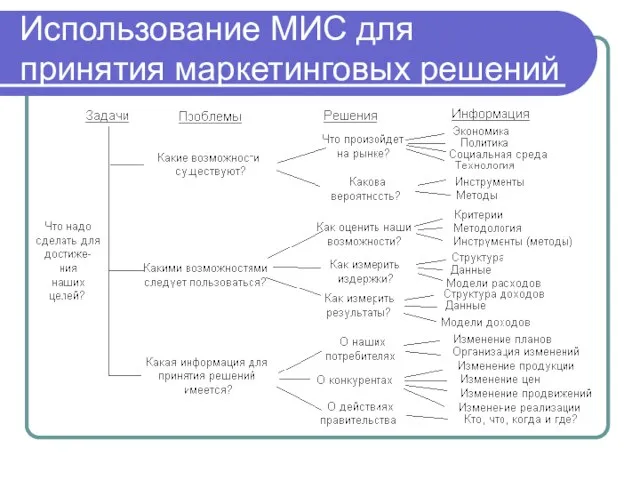
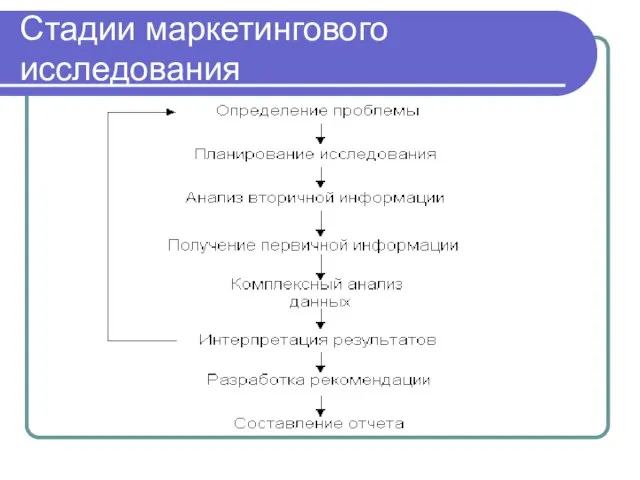
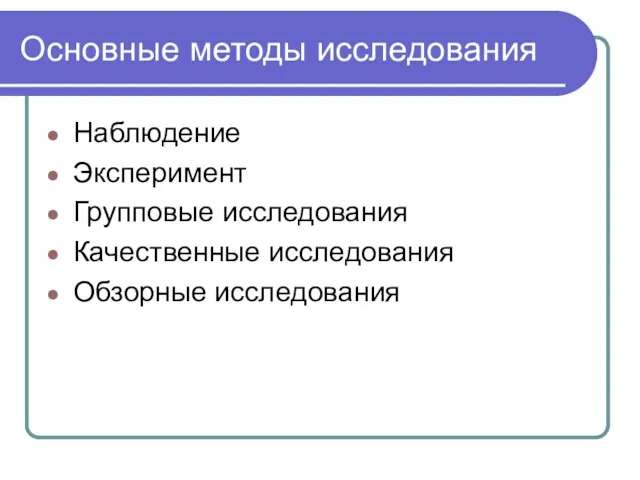
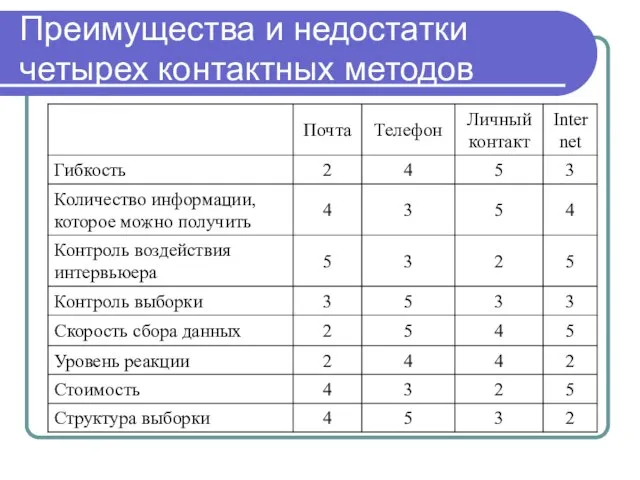
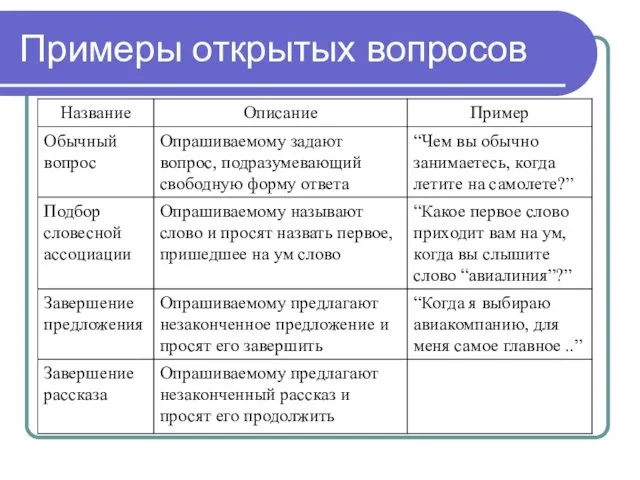
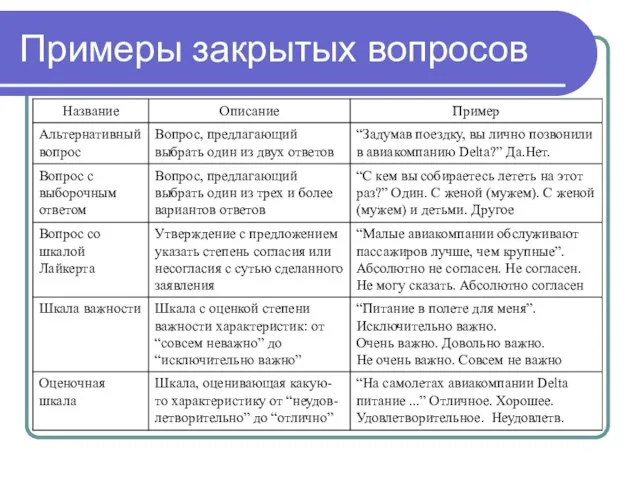
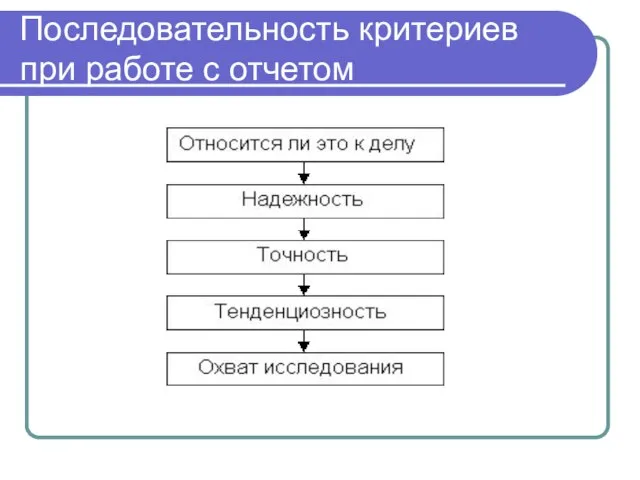
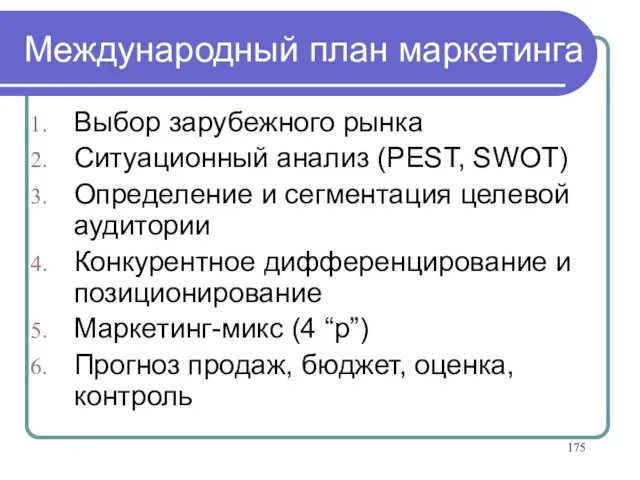
 Пальчиковые игры в развитии речи малышей
Пальчиковые игры в развитии речи малышей назови профессию
назови профессию Источники воздухоохранного права
Источники воздухоохранного права Кластеризация. Структура экзаменационных билетов
Кластеризация. Структура экзаменационных билетов Алгебра.8 класс Решение квадратных уравнений по формуле.
Алгебра.8 класс Решение квадратных уравнений по формуле. Презентация ГК СОЮЗСНАБ 2018 - перевожу
Презентация ГК СОЮЗСНАБ 2018 - перевожу Галанина Оксана Александровна
Галанина Оксана Александровна Консалтинг в Казани
Консалтинг в Казани Collective leadership institute
Collective leadership institute «ТЕХНОЛОГИЧЕСКИЕ АСПЕКТЫ РАЗВИТИЯ САМОСТОЯТЕЛЬНОСТИ УЧАЩИХСЯ НА УРОКАХ МАТЕМАТИКИ» Федосова Вера Ивановна Учитель математики
«ТЕХНОЛОГИЧЕСКИЕ АСПЕКТЫ РАЗВИТИЯ САМОСТОЯТЕЛЬНОСТИ УЧАЩИХСЯ НА УРОКАХ МАТЕМАТИКИ» Федосова Вера Ивановна Учитель математики  Анализ образовательных программ МКШ Томской области. Особенности проектирования образовательной программы МКШ
Анализ образовательных программ МКШ Томской области. Особенности проектирования образовательной программы МКШ Оператор станков с п у
Оператор станков с п у Тест по истории
Тест по истории Дисперсия
Дисперсия Гласные в причастиях прошедшего времени
Гласные в причастиях прошедшего времени Нельзя приходить в грязной обуви и одежде. Почистите ваши пиджаки и портфели, прежде чем войдёте в класс. Вы не успели пообедать на
Нельзя приходить в грязной обуви и одежде. Почистите ваши пиджаки и портфели, прежде чем войдёте в класс. Вы не успели пообедать на  Тема: Обобщение знаний об именах существительных.
Тема: Обобщение знаний об именах существительных. Спортсмены - паралимпийцы Оренбургской области
Спортсмены - паралимпийцы Оренбургской области Человек собаке друг
Человек собаке друг Животные Арктики: песец и тюлень
Животные Арктики: песец и тюлень Портфолио Алёны Ивановой
Портфолио Алёны Ивановой Богатырь
Богатырь Живопись 16-17 в.в
Живопись 16-17 в.в Презентация на тему как жили земледельцы и ремесленники в египте 5 класс
Презентация на тему как жили земледельцы и ремесленники в египте 5 класс бжд Вагизова стресс и его профилактика
бжд Вагизова стресс и его профилактика Берёзовский район - территория формирования экологии души
Берёзовский район - территория формирования экологии души Презентация на тему Футуризм
Презентация на тему Футуризм Аукцион идей «Innoteens» 1000-list-nick
Аукцион идей «Innoteens» 1000-list-nick